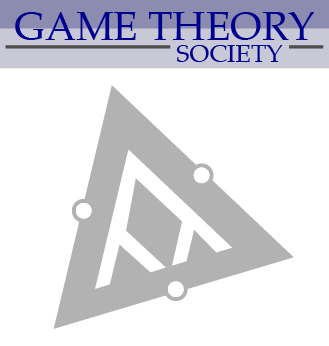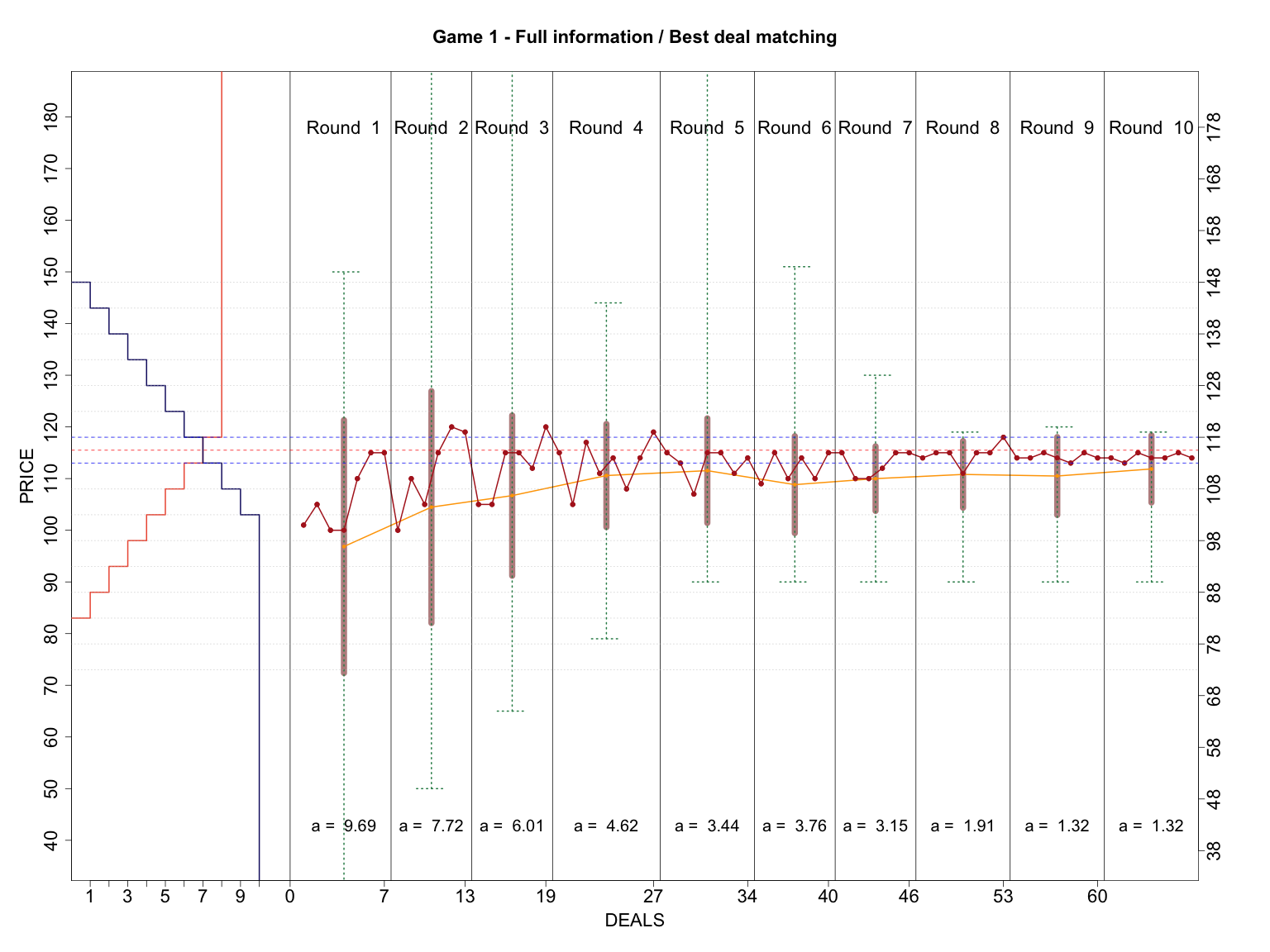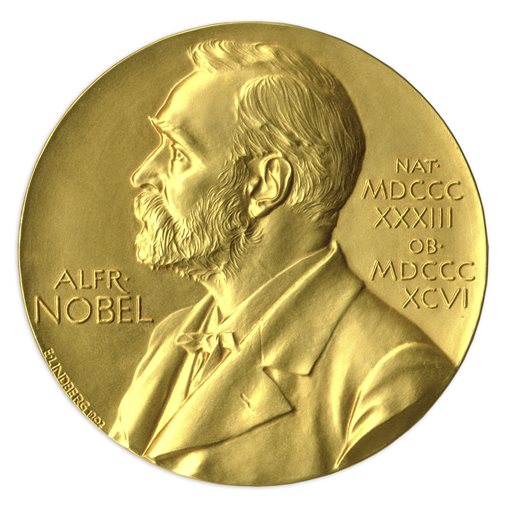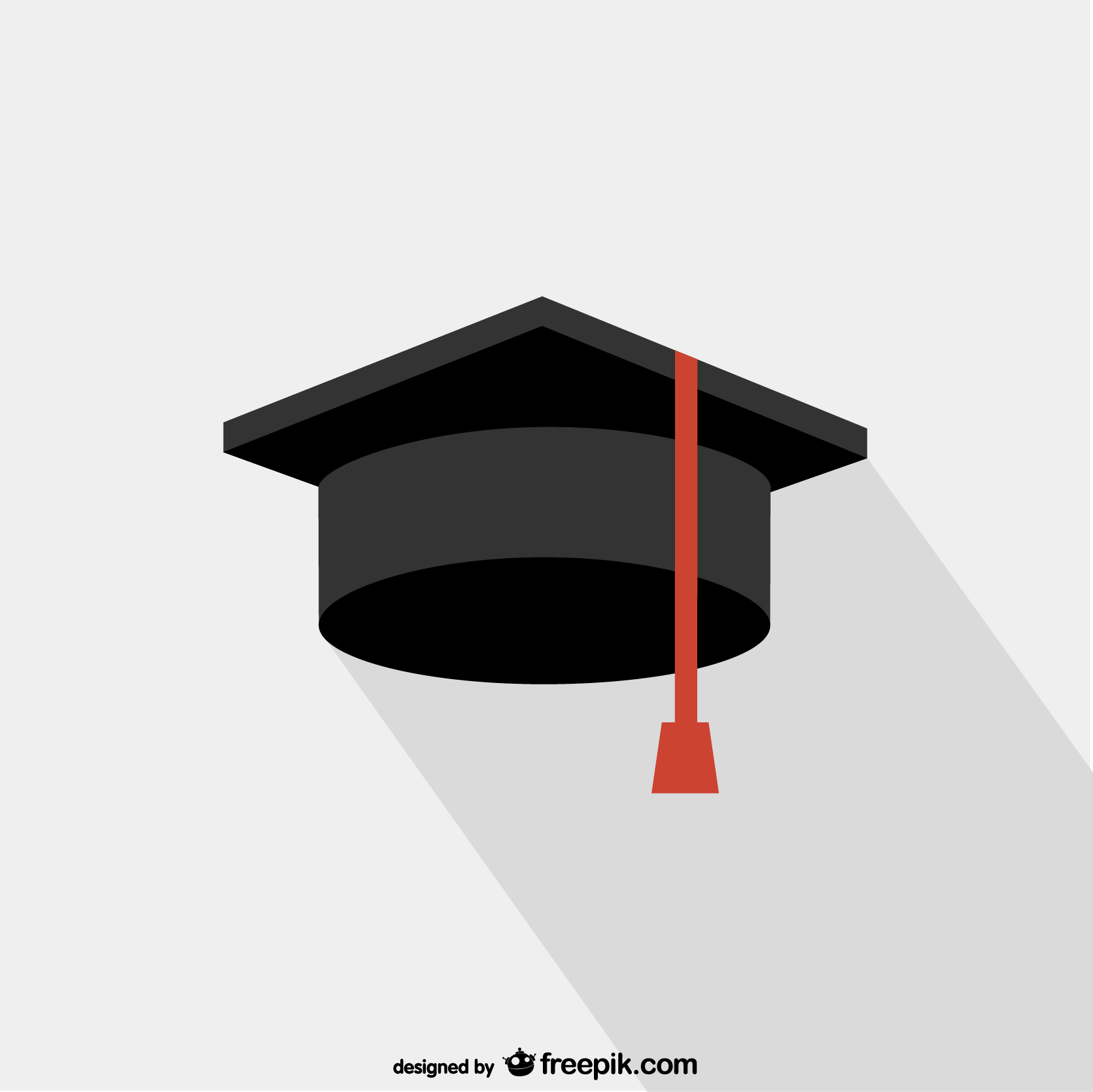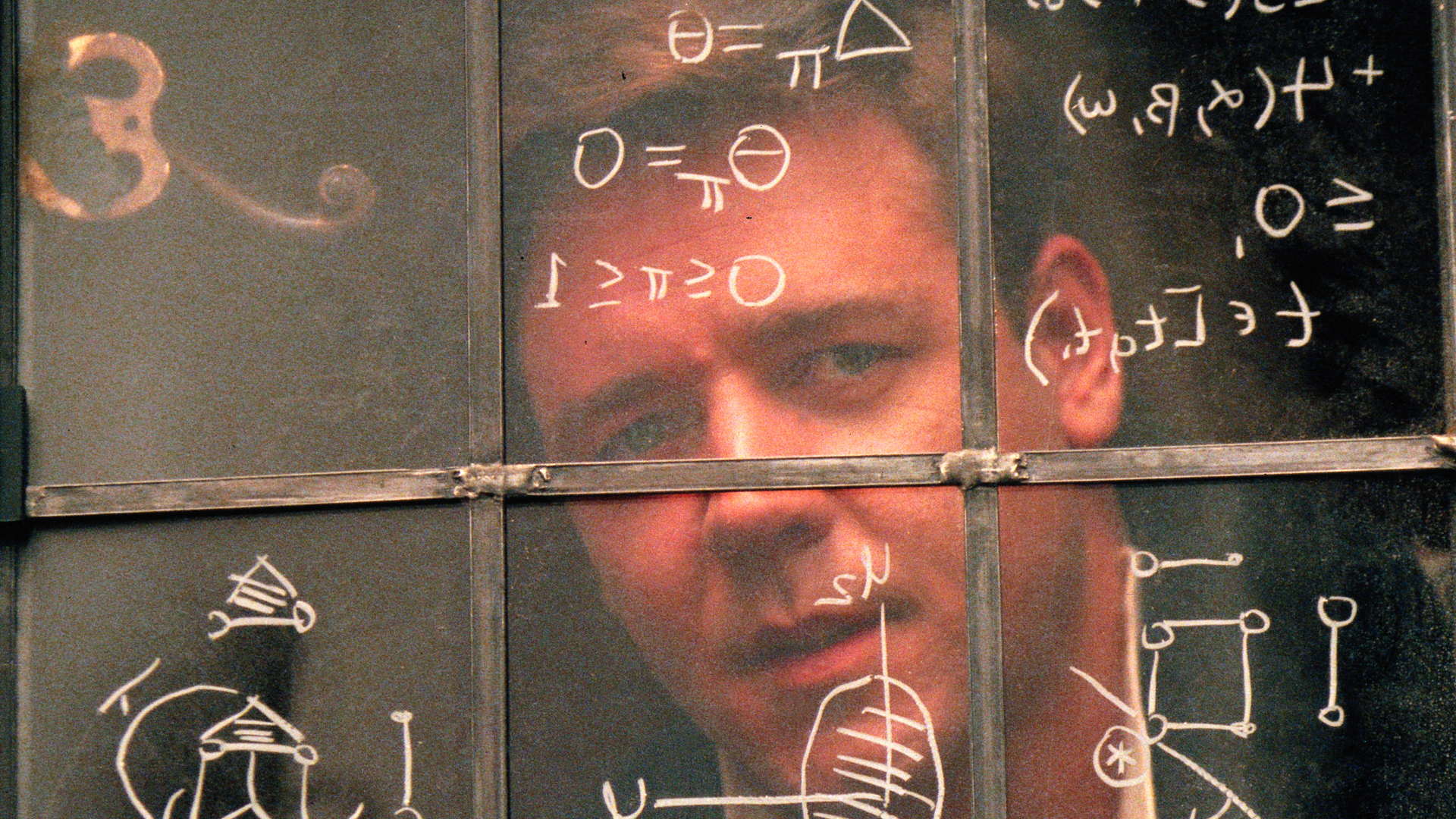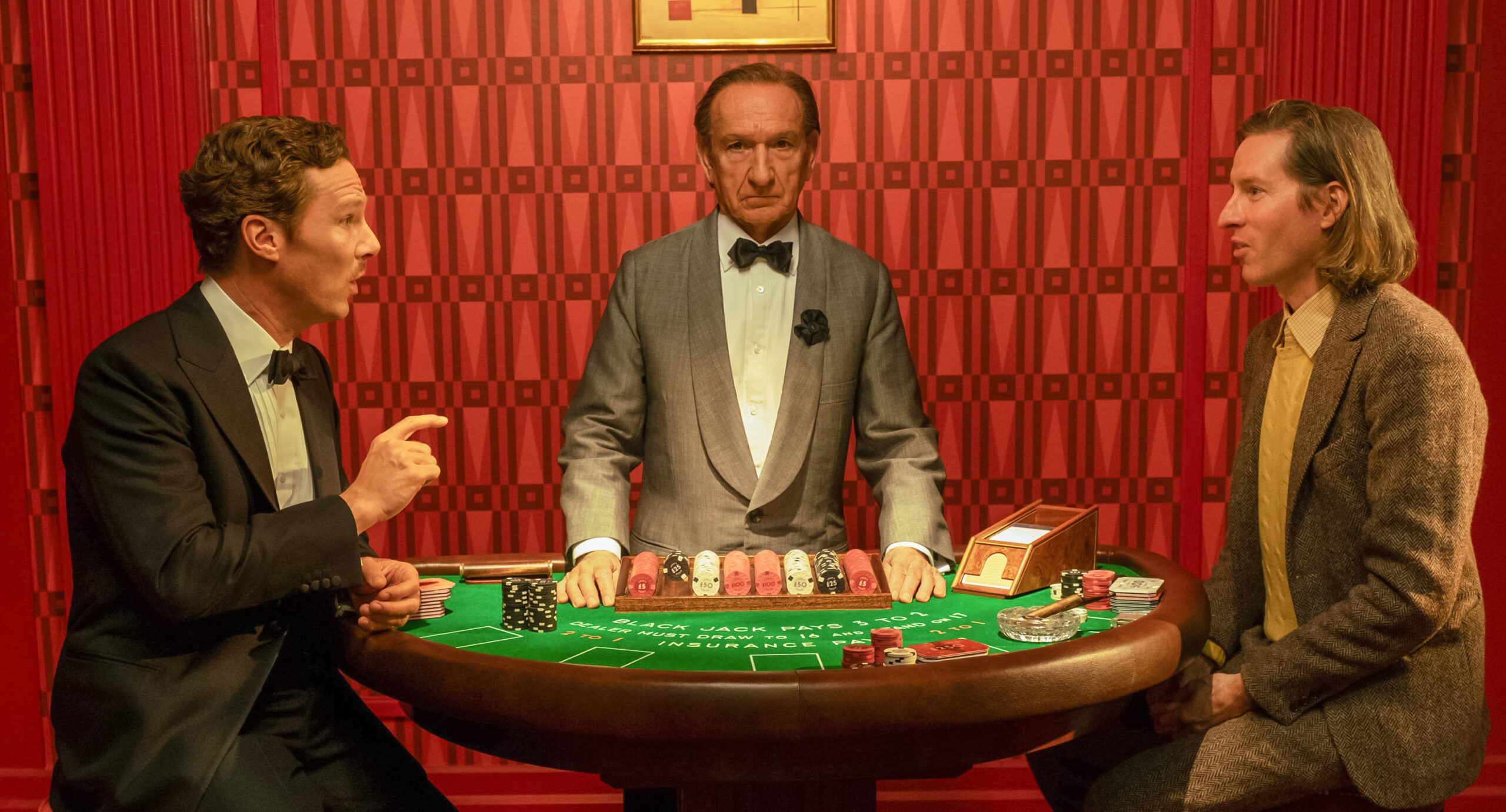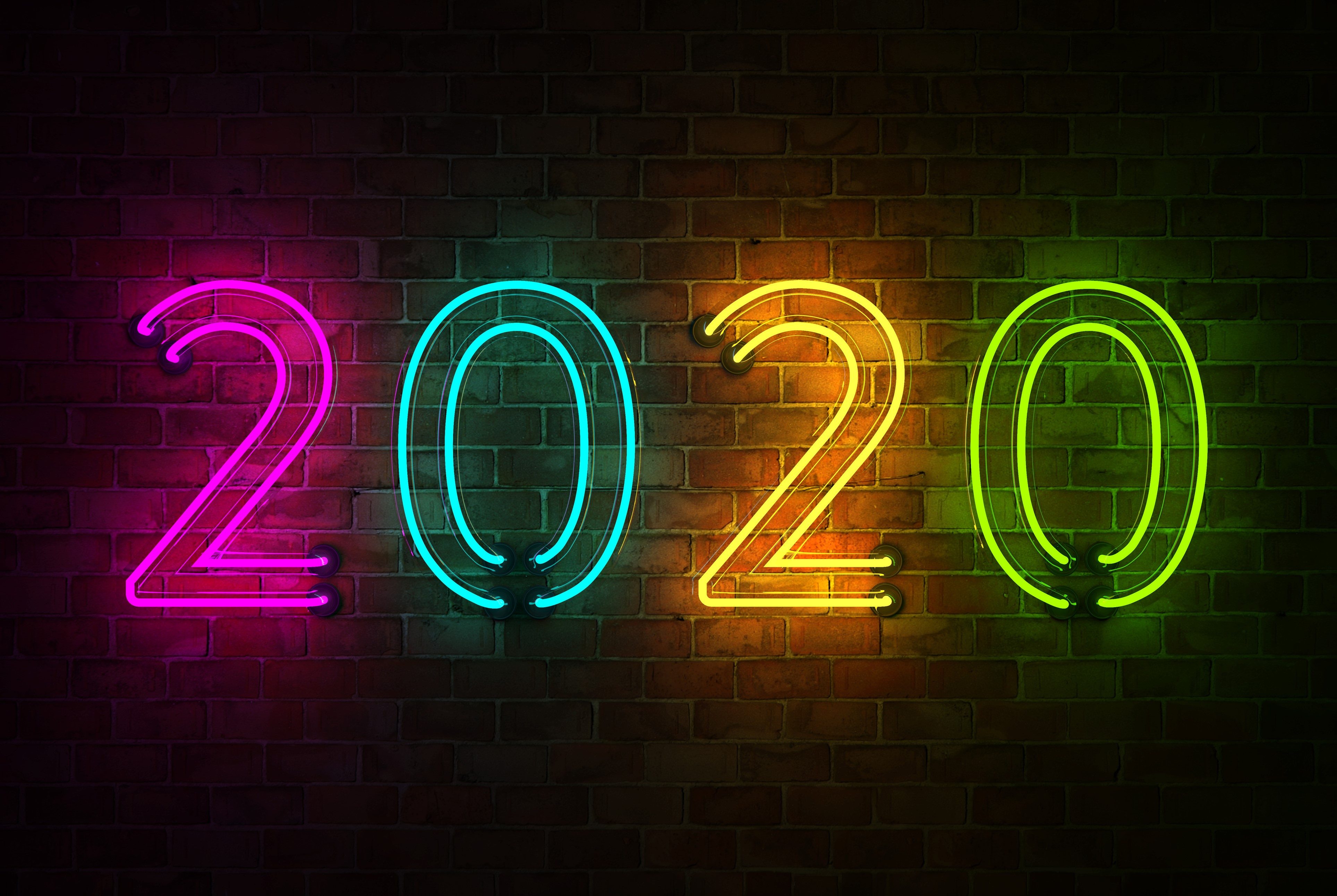
Project Details
Modeling (Modellbildung)
(Game theory and strategic interaction)
Syllabus
***THERE WILL BE CHANGES MADE TO THE SYLLABUS AS OF MID MARCH DUE TO THE COVID-19 EPIDEMIC THAT WILL BE COMMUNICATED DIRECTLY TO STUDENTS. IN PARTICULAR THERE WILL BE NO MORE PHYSICAL LECTURES AND PRESENTATIONS WILL NOT BE GIVEN ORALLY IN CLASS.***
Prof. Dr. Heiko Rauhut
Prof. Dr. Heinrich Nax
Seminar: Tuesdays, 10:15 – 12:00, Spring term 2020, room AND 3.06 (or otherwise organized remotely)
Course outline:
This seminar gives an introduction to models of social interactions in the social sciences. A focus is on game theoretical models, actor models and models about micro-macro transitions. Typical examples and empirical findings from the social sciences are discussed.
Course Credits:
The course is worth 6 ECTS credits. The course is not graded and is examined on a pass/fail basis. The course is taught in English.
To receive credit, students are expected to read the literature, participate in group work and discussions during the lecture and pass the following portfolio:
- a take-home exercise set, which is handed out in the last part of the course,
- a presentation that should be submitted by email and reviews of two other presentations.
If either is not passed the course is failed. In this case, students can redo the course one year later. Alternatively, students can take the alternative WP-Modul “Wissenschaftstheorie (Philosophy of Science)” in the upcoming next semester (fall term).
Core literature:
Diekmann, Andreas: Spieltheorie. Rowohlt 2009.
Further literature:
Dixit, Avinash K., and Susan Skeath. Games of Strategy. WW Norton & Company, 2015.
Braun, Norman & Gautschi, Thomas (2011), Rational Choice Theorie. Juventa; Weinheim, München.
Herbert Gintis (2000): Game Theory Evolving. Princeton, NJ.: Princeton University Press.
Ken Binmore (1992): Fun and Games. Lexington: Heath.
Eric Rasmusen (2000): Games and Information. 3.,veränderte Aufl., Oxford: Blackwell.
Camerer, Colin (2003): Behavioral Game Theory. Experiments in Strategic Interaction. Princeton: Princeton University Press.
Schelling, Thomas C.: Micromotives and macrobehavior. WW Norton & Company.
Course-relevant websites:
Key dates:
- Take-home coursework handed out March 31, 2020, and collected April 21, 2020.
- Presentations handed in on May 5, 2020 and reviews handed in on May 12, 2020.
Syllabus:
|
PART I: Introduction and Course credits |
|||
|
1 |
18.2.2020 |
HR |
Introduction -- course credits and introduction |
|
PART II: Game Theory |
|||
|
2 |
25.2.2020 |
HR |
Practical exercise: Class room experiment on the beauty contest game Literature:
|
|
3 |
3.3.2020 |
HH |
Non-cooperative game theory: Normal form, Best replies, Nash equilibrium Literature:
|
|
4 |
10.3.2020 |
HR |
Cooperation and punishment: Class experiment and discussion Literature:
|
|
5 |
17.3.2020 |
HH |
Cooperation and punishment: Experimental evidence Literature:
|
|
6 |
24.3.2020 |
HR |
Lying, ignorance and social dynamics Literature:
Gächter, Simon, and Jonathan F. Schulz. "Intrinsic honesty and the prevalence of rule violations across societies." Nature 531.7595 (2016): 496. |
|
7 |
31.3.2020 |
HH |
Non-cooperative game theory: dynamics, Sub-game perfection Take-home exercise set:
|
|
8 |
7.4.2020 |
HH |
Experimental game theory, Behavioral game theory, Learning in games Literature:
|
|
-- |
14.4.2020 |
|
|
|
9 |
21.4.2020 |
HH |
Bargaining, Markets
Literature:
Take-home exercise set:
|
|
10 |
28.4.2020 |
HH |
Cooperative vs noncooperative game theory Literature:
|
|
11 |
5.5. 2020 |
HR |
Projects Due |
|
12 |
12.5.2020 |
HR |
Reviews Due |
|
13 |
19.5.2020 |
HR |
Project Feedback |
|
14 |
26.5.2020 |
|
no lecture |
Literature and questions for preparation of student presentations
|
Collective goods and mechanisms for the evolution of cooperation |
|
Questions for preparing your talk:
a) Define the general property of collective good problems and illustrate your definition with a real-world example. b) What are the game theoretical predictions in such situations? Compare them to central findings of empirical research. c) Discuss mechanisms that has have been tested to promote cooperation in collective good problems. d) If you had to rely on just one, which one would you choose? Discuss your choice. Under which conditions is it collectively beneficial to do so?
Literature for preparing your talk (non-exhaustive; students are invited to do their own literature review)
Balafoutas, Loukas, and Nikos Nikiforakis. "Norm enforcement in the city: A natural field experiment." European Economic Review 56.8 (2012): 1773-1785. Balafoutas, Loukas, Nikos Nikiforakis, and Bettina Rockenbach. "Altruistic punishment does not increase with the severity of norm violations in the field." Nature communications 7 (2016): 13327. Bó, Pedro Dal. "Cooperation under the shadow of the future: experimental evidence from infinitely repeated games." American economic review 95.5 (2005): 1591-1604. Boyd, R., & Richerson, P. J. (1992). Punishment allows the evolution of cooperation (or anything else) in sizable groups. Ethology and sociobiology, 13(3), 171-195. Chaudhuri, A. (2011). “Sustaining cooperation in laboratory public goods experiments: a selective survey of the literature.” Experimental Economics, 14(1), 47-83. [Overview] Dana, J., D.M. Cain, and R.M. Dawes (2006). “What you don’t know won’t hurt me: Costly (but quiet) exit in dictator games”. Organizational Behavior and Human Decision Processes, vol. 100, pp. 193-201. Dana, J., Weber, R. A., & Kuang, J. X. (2007). Exploiting moral wiggle room: experiments demonstrating an illusory preference for fairness. Economic Theory, 33(1), 67-80. DellaVigna, S., J.A. List, and U. Malmendier (2012). “Testing for altruism and social pressure in charitable giving”. Quarterly Journal of Economics, vol. 127, pp. 1-56. Dreber, A., Rand, D. G., Fudenberg, D., & Nowak, M. A. (2008). „Winners don’t punish.“ Nature, 452(7185), 348. Efferson, C., Vogt, S., Elhadi, A., Ahmed, H. E. F., & Fehr, E. (2015). Female genital cutting is not a social coordination norm. Science, 349(6255), 1446-1447. Falk, Armin, and Christian Zehnder. "A city-wide experiment on trust discrimination." Journal of Public Economics 100 (2013): 15-27. Fehr, E. and S. Gächter (2000). "Cooperation and punishment in public goods experiments." American Economic Review 90(4): 980-994. Fischbacher, U., Gächter, S., & Fehr, E. (2001). „Are people conditionally cooperative? Evidence from a public goods experiment.” Economics letters, 71(3), 397-404. [Conditional cooperation lab] Frey, B. S., & Meier, S. (2004). “Social comparisons and pro-social behavior: Testing "conditional cooperation" in a field experiment.” American Economic Review, 94(5), 1717-1722. [Conditional cooperation field] Gächter, S., Renner, E., & Sefton, M. (2008). „The long-run benefits of punishment.” Science, 322(5907), 1510-1510. Goette, L., Huffman, D., & Meier, S. (2006). The impact of group membership on cooperation and norm enforcement: Evidence using random assignment to real social groups. American Economic Review, 96(2), 212-216. [Social groups and identities] Gneezy, U. and A. Rustichini (2000). “A fine is a price”. Journal of Legal Studies, vol. 29, pp. 1-17. Herrmann, B., Thöni, C., & Gächter, S. (2008). „Antisocial punishment across societies.” Science, 319(5868), 1362-1367. Milinski, M., Semmann, D., & Krambeck, H. J. (2002). “Reputation helps solve the ‘tragedy of the commons’.” Nature, 415(6870), 424. [direct- & indirect reciprocity, and endgame effects] Nikiforakis, N. "Punishment and counter-punishment in public good games: Can we really govern ourselves?." Journal of Public Economics 92.1-2 (2008): 91-112. Samek, A. S., & Sheremeta, R. M. (2014). “Recognizing contributors: an experiment on public goods.” Experimental Economics, 17(4), 673-690. [Shame or prestige] Sefton, M., R. Shupp, and J.M. Walker (2007). “The effect of rewards and sanctions in provision of public goods”. Economic Inquiry, vol. 45, pp. 671-690. Vogt, S., Zaid, N. A. M., Ahmed, H. E. F., Fehr, E., & Efferson, C. (2016). Changing cultural attitudes towards female genital cutting. Nature, 538(7626), 506. Voss, Thomas. 2001. “Game-Theoretical Perspectives on the Emergence of Social Norms.” In Social Norms, edited by Michael, Hechter, and Karl-Dieter Opp, 105–36. New York: Russell Sage Foundation. Winter, F., & Zhang, N. (2018). Social norm enforcement in ethnically diverse communities. Proceedings of the National Academy of Sciences, 115(11), 2722-2727. Yoeli, E., Hoffman, M., Rand, D. G., & Nowak, M. A. (2013). “Powering up with indirect reciprocity in a large-scale field experiment.” Proceedings of the National Academy of Sciences, 110(Supplement 2), 10424-10429. Zelmer, Jennifer. "Linear public goods experiments: A meta-analysis." Experimental Economics 6.3 (2003): 299-310. [meta analysis] |
|
Lying and social dynamics |
|
Questions for preparing your talk:
a) Describe a way of measuring dishonesty in the lab and its advantages and disadvantages. b) What are the game theoretical predictions in such situations? Compare them to central findings of empirical research. c) Briefly explain the different individual motives in favor and disfavor of lying. Discuss how information about others' lying can affect choices for dishonesty. d) If you had the opportunity to reveal the global extent of lying, would you do so? Discuss your choice. Under which conditions is it collectively beneficial to do so?
Literature for preparing your talk (non-exhaustive; students are invited to do their own literature review)
Abeler, J., Nosenzo, D., & Raymond, C. (2019). Preferences for truth‐telling. Econometrica, 87(4), 1115-1153. [Meta-analysis] Abeler, J., Becker, A., & Falk, A. (2014). Representative evidence on lying costs. Journal of Public Economics, 113, 96-104. Bucciol, A. and M. Piovesan (2011). “Luck or cheating? A field experiment on honesty with children”. Journal of Economic Psychology, vol. 32, pp. 73-78. Capraro, Valerio. “Who lies? A meta-analysis of the effect of sex, age, and education on honesty.” (2017). [Meta-analysis] Chance, Z., M. I. Norton, F. Gino and D. Ariely (2011). “Temporal view of the costs and benefits of self-deception”. Proceedings of the National Academy of Sciences, 108, 15655-15659. Childs, J. (2012). Gender differences in lying. Economics Letters, 114(2), 147-149. Cohn, A., & Maréchal, M. A. (2018). Laboratory measure of cheating predicts school misconduct. The Economic Journal, 128(615), 2743-2754. Cohn, A., Maréchal, M. A., & Noll, T. (2015). Bad boys: How criminal identity salience affects rule violation. The Review of Economic Studies, 82(4), 1289-1308. Dai, Z., Galeotti, F., & Villeval, M. C. (2017). Cheating in the lab predicts fraud in the field: An experiment in public transportation. Management Science, 64(3), 1081-1100. Diekmann, Andreas, Wojtek Przepiorka, and Heiko Rauhut. "Lifting the veil of ignorance: An experiment on the contagiousness of norm violations." Rationality and Society 27.3 (2015): 309-333. Dreber, A., & Johannesson, M. (2008). Gender differences in deception. Economics Letters, 99(1), 197-199. Drupp, M. A., Khadjavi, M., & Quaas, M. F. (2016). “Truth-telling and the regulator: Evidence from a field experiment with commercial fishermen (No. 2063)”. Kiel Working Paper. [field experiment linked to nudging] Fischbacher, U., & Föllmi-Heusi, F. (2013). „Lies in disguise—an experimental study on cheating.” Journal of the European Economic Association, 11(3), 525-547. [first dice game] Gächter, Simon, and Jonathan F. Schulz. "Intrinsic honesty and the prevalence of rule violations across societies." Nature 531.7595 (2016): 496. Gerlach, Philipp, Kinneret Teodorescu, and Ralph Hertwig. "The truth about lies: A meta-analysis on dishonest behavior." Psychological bulletin 145.1 (2019): 1. Gneezy, U. (2005). “Deception: The Role of Consequences”. American Economic Review, vol. 95, pp. 384-394. Gneezy, U., Rockenbach, B., & Serra-Garcia, M. (2013). Measuring lying aversion. Journal of Economic Behavior & Organization, 93, 293-300. Jacobsen, C., Fosgaard, T. R., & Pascual‐Ezama, D. (2018). Why do we lie? A practical guide to the dishonesty literature. Journal of Economic Surveys, 32(2), 357-387. Kroher, Martina, and Tobias Wolbring. "Social control, social learning, and cheating: Evidence from lab and online experiments on dishonesty." Social Science Research 53 (2015): 311-324. Potters, J. and J. Stoop (2016). “Do cheaters in the lab also cheat in the field?”. European Economic Review, 87, 26-33. Rauhut, Heiko. “Beliefs about lying and spreading of dishonesty: Undetected lies and their constructive and destructive social dynamics in dice experiments.” PloS one 8.11 (2013): e77878. Rosenbaum, Stephen Mark, Stephan Billinger, and Nils Stieglitz. "Let’s be honest: A review of experimental evidence of honesty and truth-telling." Journal of Economic Psychology 45 (2014): 181-196. Shalvi, S., Dana, J., Handgraaf, M. J., & De Dreu, C. K. (2011). Justified ethicality: Observing desired counterfactuals modifies ethical perceptions and behavior. Organizational Behavior and Human Decision Processes, 115(2), 181-190. Utikal, Verena, and Urs Fischbacher. "Disadvantageous lies in individual decisions." Journal of Economic Behavior & Organization 85 (2013): 108-111. [Evidence that nuns lie in order to claim less payoffs or to appear more honest] |
|
Optional topic 1: Signaling |
|
Literature for preparing your talk (non-exhaustive; students are invited to do their own literature review)
Overview literature:
Gambetta, Diego. "Signaling." The Oxford handbook of analytical sociology (2009): 168-194. Rebecca Bliege Bird and Eric Alden Smith: "Signaling theory, strategic interaction, and symbolic capital." Current anthropology 46.2 (2005): 221-248. Diekmann, Andreas, and Wojtek Przepiorka. "Soziale Normen als Signale: Der Beitrag der Signaling-Theorie." Soziologische Theorie kontrovers. Vol. 50. VS Verlag für Sozialwissenschaften, 2010. 220-237. Przepiorka, W., & Berger, J. (2017). Signalling theory evolving: signals and signs of trustworthiness in social exchange. Social Dilemmas, Institutions and the Evolution of Cooperation. Berlin: De Gruyter Oldenbourg, 373-392.
Specific studies:
Berger, J. (2019). Signaling can increase consumers' willingness to pay for green products. Theoretical model and experimental evidence. Journal of consumer behaviour, 18(3), 233-246. Densley, J. A. (2012). Street gang recruitment: Signaling, screening, and selection. Social problems, 59(3), 301-321. Fehrler, S., & Przepiorka, W. (2013). Charitable giving as a signal of trustworthiness: Disentangling the signaling benefits of altruistic acts. Evolution and Human Behavior, 34(2), 139-145. Gambetta, D. (1994). Inscrutable markets. Rationality and Society, 6(3), 353-368. Gambetta, D., & Przepiorka, W. (2014). Natural and strategic generosity as signals of trustworthiness. PloS one, 9(5), e97533. Gambetta, D. (2011). Codes of the underworld: How criminals communicate. Princeton University Press. Gambetta, D., & Hamill, H. (2005). Streetwise: How taxi drivers establish customer's trustworthiness. Russell Sage Foundation. Przepiorka, W. (2010). Diego Gambetta: Codes of the Underworld: How Criminals Communicate. Rationality, Markets and Morals, 1(8), 9-11. Przepiorka, W., & Diekmann, A. (2012). Temporal embeddedness and signals of trustworthiness: Experimental tests of a game theoretic model in the United Kingdom, Russia, and Switzerland. European Sociological Review, 29(5), 1010-1023. Przepiorka, W., Norbutas, L., & Corten, R. (2017). Order without law: Reputation promotes cooperation in a cryptomarket for illegal drugs. European Sociological Review, 33(6), 752-764. Przepiorka, W., & Liebe, U. (2016). Generosity is a sign of trustworthiness—the punishment of selfishness is not. Evolution and human behavior, 37(4), 255-262.
|
|
Optional topic 2: Normative conflicts |
|
Literature for preparing your talk (non-exhaustive; students are invited to do their own literature review)
Specific studies:
Álvarez-Benjumea, A., & Winter, F. (2018). Normative change and culture of hate: An experiment in online environments. European Sociological Review, 34(3), 223-237. Balafoutas, L., & Nikiforakis, N. (2012). Norm enforcement in the city: A natural field experiment. European Economic Review, 56(8), 1773-1785. Fernandez-Dols, J. M., Aguilar, P., Campo, S., Vallacher, R. R., Janowsky, A., Rabbia, H., ... & Lerner, M. J. (2010). Hypocrites or maligned cooperative participants? Experimenter induced normative conflict in zero-sum situations. Journal of Experimental Social Psychology, 46(3), 525-530. Gangadharan, L., Nikiforakis, N., & Villeval, M. C. (2017). Normative conflict and the limits of self-governance in heterogeneous populations. European Economic Review, 100, 143-156. Kingsley, D. C. (2016). Endowment heterogeneity and peer punishment in a public good experiment: Cooperation and normative conflict. Journal of Behavioral and Experimental Economics, 60, 49-61. Nikiforakis, N., Noussair, C. N., & Wilkening, T. (2012). Normative conflict and feuds: The limits of self-enforcement. Journal of Public Economics, 96(9-10), 797-807. Rauhut, H., & Winter, F. (2017). Types of Normative Conflicts and the Effectiveness of Punishment. Social dilemmas, institutions, and the evolution of cooperation (2017), 239. Reuben, E., & Riedl, A. (2013). Enforcement of contribution norms in public good games with heterogeneous populations. Games and Economic Behavior, 77(1), 122-137. Winter, F., Rauhut, H., & Helbing, D. (2012). How norms can generate conflict: An experiment on the failure of cooperative micro-motives on the macro-level. Social Forces, 90(3), 919-946. Winter, F., Rauhut, H., & Miller, L. (2018). Dynamic bargaining and normative conflict. Journal of Behavioral and Experimental Economics, 74, 112-126. |
|
Optional topic 3: Free topic |
|
Students are encouraged to do their own literature review on other topics in the area of experimental game theory and present it in the last topic slot. |
Additional notes:
This document clarifies the changes made to the syllabus as the course is shifted completely to e-learning and no further meetings in the classroom or elsewhere will take place until the end of the term.
Part I: presentations and some revisions of the format
Here is a current list of student presentations. New dates are explained below. Students who have not yet specified their text to present: they should assign themselves to a presentation text as soon as possible. Only one student per text. Use the last Doodle:
Rebrand.ly/modelingfs20
|
|
Vorname |
Nachname |
PPT due |
Review due |
Presentation topic |
|
1 |
Aktug |
|
5.5. |
12.5. |
Bó 2005: Cooperation under the shadow of the future. |
|
2 |
Elinor |
5.5. |
12.5. |
Dana et al. 2007: Exploiting moral wiggle room. |
|
|
3 |
Jill |
|
5.5. |
12.5. |
Gneezy et al. 2000: A fine is a price |
|
4 |
Nico |
|
5.5. |
12.5. |
Falk & Zehnder 2013: A city-wide experiment on trust discrimination. |
|
5 |
Stefania |
|
5.5. |
12.5. |
Dreber et al.: Winners don’t punish. |
|
6 |
Nauris |
|
5.5. |
12.5. |
Topic yet unchosen (Cooperation and Punishment) |
|
7 |
Lisa |
|
5.5. |
12.5. |
Abeler et al. 2019: Preferences for truth-telling. |
|
8 |
Dominik |
|
5.5. |
12.5. |
Lying: No text yet |
|
9 |
Markus |
|
5.5. |
12.5. |
Lying: No text yet |
|
10 |
Swassthika |
|
5.5. |
12.5. |
Lying: No text yet |
|
11 |
Delia |
|
5.5. |
12.5. |
Lying: No text yet |
|
12 |
Melanie |
5.5. |
12.5. |
Gambetta, D. (2011). Codes of the underworld |
|
|
13 |
Anina |
|
5.5. |
12.5. |
Signaling: A different text than above |
|
14 |
Hanna |
|
5.5. |
12.5. |
Alvarez & Winter 2018: Normative change and culture of hate. |
|
15 |
Mithushana |
|
5.5. |
12.5. |
Normative Conflict: A different text than above |
The student presentations are uploaded in Power Point or PDF Format to the OLAT forum (for all students of the course visible) at the latest at the time of the course and due date mentioned above. All students are asked to look at all presentations. The presentations are graded on a pass/fail basis.
Since we have changed from personal presentations to e-learning, we add one more element of scientific interaction. Each student should discuss two presentations of other students in the class. At least one of these discussions has to be on a different topic than the own presentation (there are three large topics: cooperation and punishment (24.3.), lying (28.4.) and own topic (19.5.). Ideally, both discussions are on a different topic than the own topic. Please use the second, new doodle to assign yourself as a discussant to two presentations:
rebrand.ly/modelingfs20discussion
Discussants should be exclusive, hence there should be for each presentation two discussants, not more not less. A discussant has to write a “one-pager”, so at least one paragraph and maximum one page of a review of the presentation of one other student. These two reviews are also graded on a pass or fail basis. The reviews should be uploaded to the OLAT discussion forum, so that all students and, in particular, the presenter, can see the reviews.
This form moves the course to a higher level of scientific interaction. This format resembles the peer-review system in academia, where one paper is submitted for review and then two reviews are written. This allows students to get an idea of the scientific, often writing-based way of submitting scientific ideas and receiving reviews. After this, typically the editor collects the reviews and provides an overall assessment, taking the original submission and the reviews into account. This will be done by the lecturer in this case.
The deadlines are as follows. We will move some of the (e-)lectures to an earlier date (see updated time schedule). The take-home exam will reflect core elements of these lectures and be distributed and collected earlier. All this material allows for preparation of the topical and more specific presentations later on. Then all project presentations are moved to one date: May 5. Then all students have time for one week to write their two reviews of two other presentations until May 12. One week later, there will be written individual feedback for each student (May 19).
For preparation of the core topic cooperation and punishment it is compulsory that each student reads at least one of the following two articles:
- Fehr, Ernst, and Herbert Gintis. "Human motivation and social cooperation: Experimental and analytical foundations." Annu. Rev. Sociol. 33 (2007): 43-64.
- Chaudhuri, A. (2011). “Sustaining cooperation in laboratory public goods experiments: a selective survey of the literature.”
Both texts provide an excellent overview on the topic and makes all student presentations on this topic better understandable. Students doing their project on this topic should read more than one paper, obviously.
For preparation of the core topic lying it is compulsory that each student reads the following overview article:
- Jacobsen, C., Fosgaard, T. R., & Pascual-Ezama, D. (2018). Why do we lie? A practical guide to the dishonesty literature. Journal of Economic Surveys, 32(2), 357-387.
In addition, for a better understanding of the lecture slides, the following article is also recommended to read:
- Rauhut, Heiko. "Beliefs about lying and spreading of dishonesty: Undetected lies and their constructive and destructive social dynamics in dice experiments." PloS one 8.11 (2013): e77878.
The optional topics are relatively free. Good introductory texts for signaling and normative conflict are to be found in the literature list, e.g. on signaling Gambetta (2009) and on normative conflict Winter, Rauhut & Helbing (2012).
The lecture Lying and social dynamics is moved to 24.3. and will be re-designed to an e-learning format. The lecture will start 14:15 using the video conference tool Zoom. Please use the following link:
You have to download the program; it is free of charge and without registration. Shortly before e-class, you will receive an email with the link. Shortly before e-class, the slides will be distributed. Please bring a die to the video-session. Details will follow.
Part II: Take home exams and respective lectures
The lectures are uploaded as usual on https://gametheory.online under https://gametheory.online/project_show/39 . The take-home exercise sets and exams are distributed electronically by March 31 and due at 21 April.
- Documents Download the documents related to this project here
Lecture 1 Lecture 2 Lecture 3 Lecture 3 Book Chapter Lecture 4 Lecture 5 Lecture 6 Lecture 8 Lecture 9 Lecture 10
- Category General info



